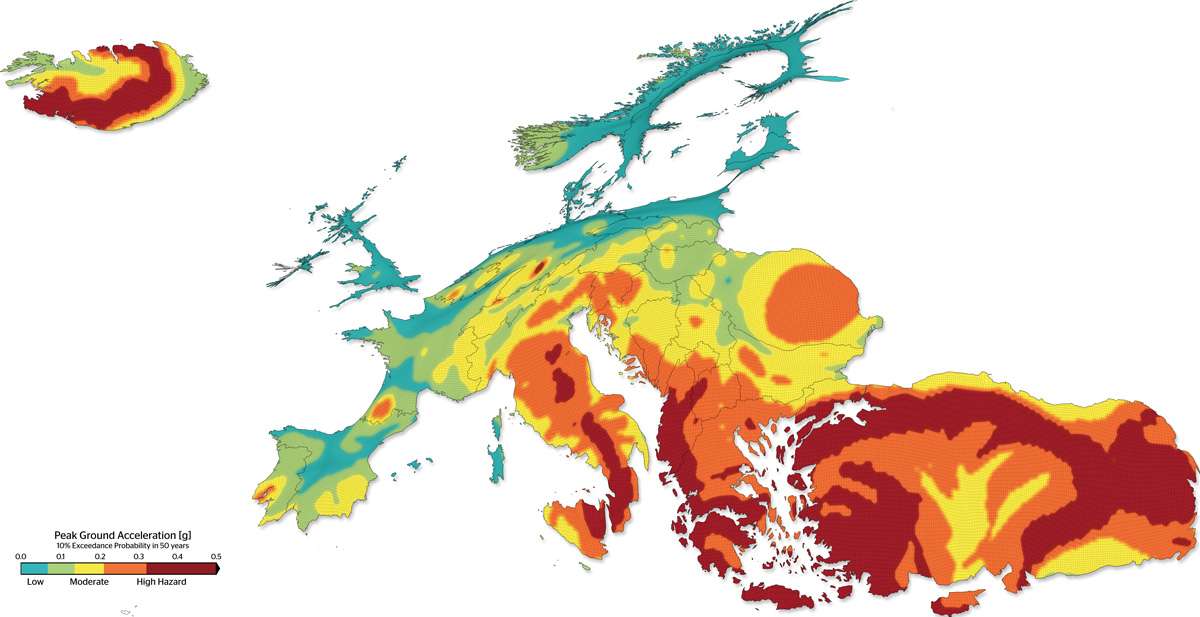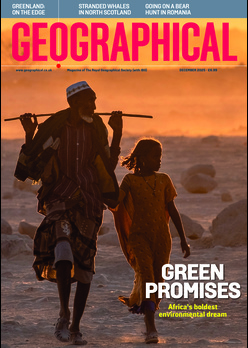
Where are Europe’s earthquakes located? Benjamin Hennig maps the answer
By Benjamin Hennig
A deeper understanding and better communication of earthquake risk has been a major challenge in geosciences for a long time. The Global Earthquake Model initiative aims to become the world’s most complete source of earthquake risk resources and works towards a globally accepted standard for risk assessment. As part of this collaborative initiative, the EU-funded SHARE (‘Seismic Hazard Harmonization in Europe’) project helped in generating the first consistent regional seismic hazard model for Europe (including Turkey). The model, published in 2013, overcomes the limitation of national borders and includes a thorough quantification of the uncertainties.
Seismic hazard data collected for this model consisted of records from more than 30,000 earthquakes in Europe with a magnitude of 3.5 and above on the Richter scale which occurred since the year 1000, as shown in the smaller map in this feature. To fully consider that hazards do not only reflect the mere occurrence of major seismic events, but also the damage they create, the model also factors in the earthquakes’ damaging effects. Moderate earthquakes in very densely populated regions can have a major impact. The vulnerability of populations depends on a multitude of factors that go beyond the actual earthquake’s magnitude.

The cartogram shows the spatial variation of seismic hazard in Europe derived from the SHARE model. It highlights the most vulnerable regions by resizing each area according to its so-called Peak Ground Acceleration. The data depicts the 10 per cent ‘exceedance probability’ that a peak ground acceleration of a certain fraction of the gravitational acceleration is observed within the next 50 years. It is therefore a depiction of the ground motions and consequently the related seismic hazard in each area. The colour key categorises these values according to their relative hazard.
The spatial patterns of largest seismic hazards in Europe mostly follow tectonic fault lines. These range from Iceland in the northwest of Europe, situated on the Mid-Atlantic-Ridge, to the North Anatolian Fault zone in Turkey in the southeast. The Balkan and Mediterranean countries, as well as Turkey, with their much denser populations living in regions at high risk, have a long history of destructive and deadly earthquakes. More remote areas, such as Iceland’s highly active and hazardous seismic zone, leave much smaller populations vulnerable to the danger; a strong earthquake here in 1784 (an estimated magnitude of 7.2Mw) caused severe damage to farmhouses and killed three people. In contrast, the first in a series of recent earthquakes in central Italy in August 2016 (magnitude 6.2Mw) led to 299 deaths and caused severe damage to a whole town, leaving 4,500 people homeless. Other earthquakes in Southern Europe and Turkey have cost thousands of lives in the past.
Interdisciplinary and trans-national research on both seismic hazards and a deeper understanding of the links between hazard and risk are important elements in mitigating earthquake damages and reducing the danger for affected populations living in these most hazardous regions.
Benjamin Hennig (@geoviews) is Associate Professor in Geography, University of Iceland and Honorary Research Associate in the School of Geography and the Environment, University of Oxford. He is part of the Worldmapper project and is author of www.viewsoftheworld.net




